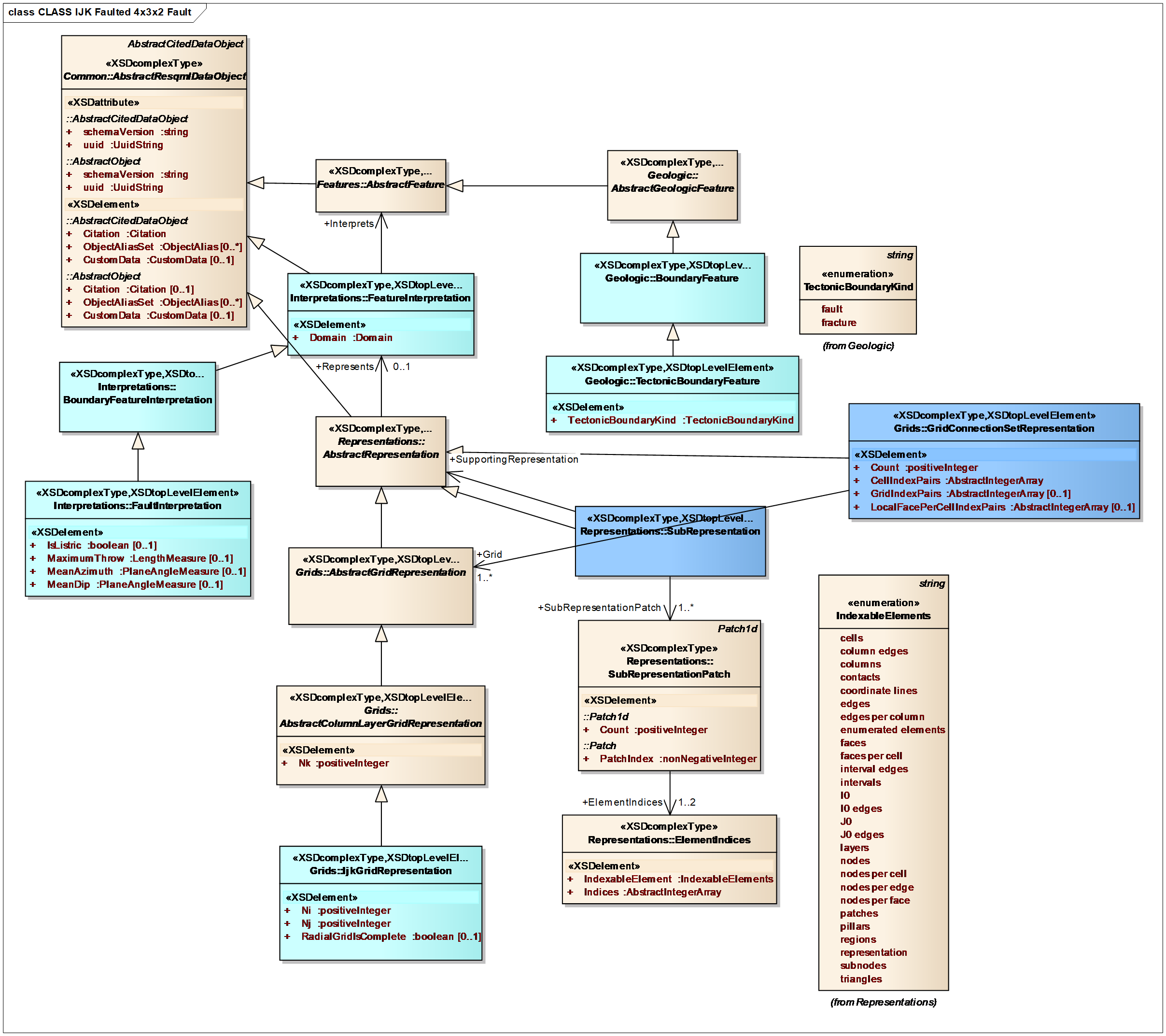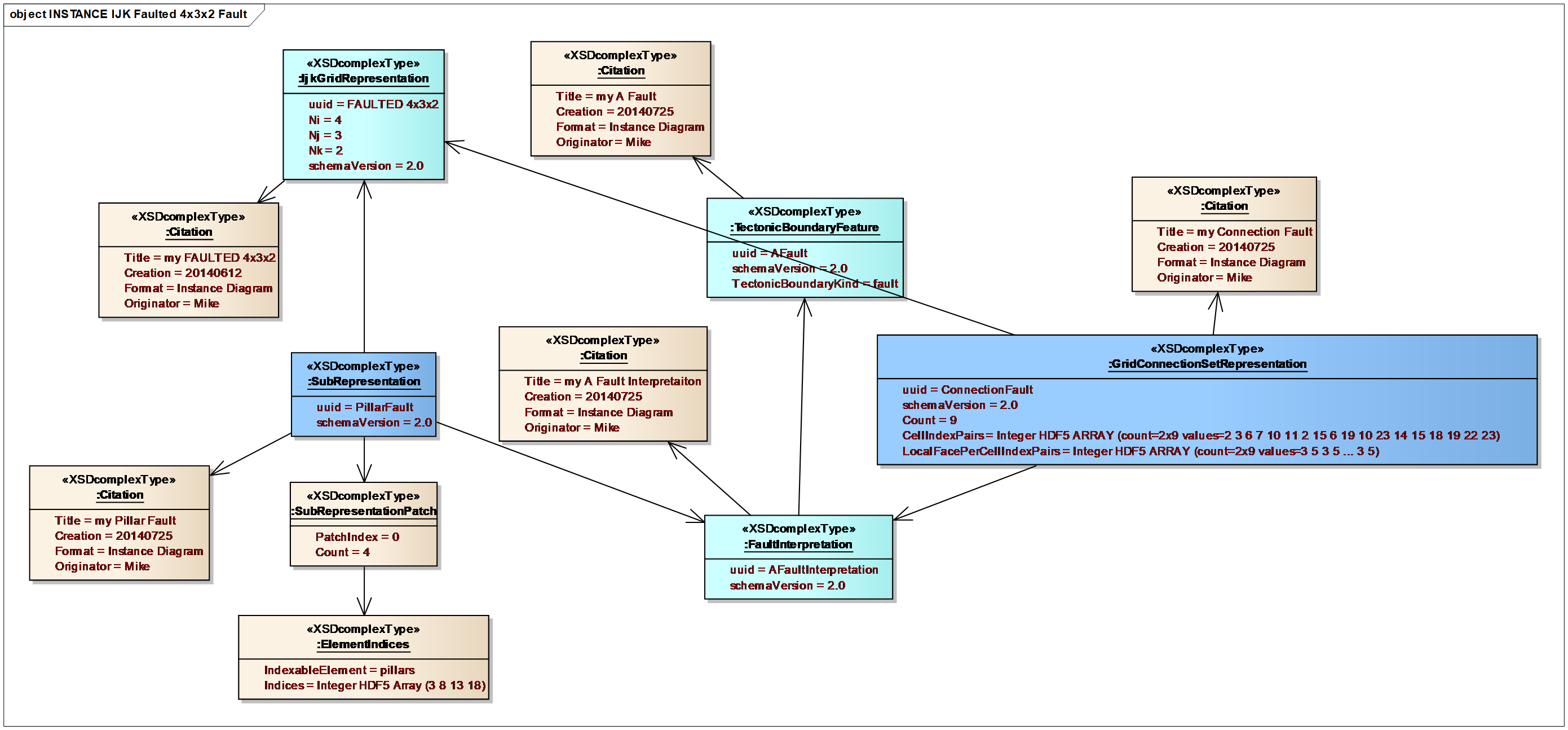11.19.3 Fault Representations on the 4x3x2 Faulted IJK Grid
| Topic Version | 1 | Published | 09/11/2015 | |
| For Standard | RESQML v2.0.1 | |||
There are two recommended ways of creating a representation of a fault given a grid. If the fault is a pillar fault, i.e., follows the pillars of a structure through the structure without stair-stepping, then the fault may be represented using a pillar-based subrepresentation of the structure, which in this case is a faulted grid. This places the fault in the grid, but does not explicitly specify the topological support of the fault on the grid. The latter can be constructed using a grid connection set representation, which is based upon all of the cell-face-pairs of the grid which intersect the fault. Figure 11.19.3-1 is a class diagram which contains both the grid subrepresentation, the grid connection set representation, and the fault feature and interpretation. #RESQML_c_291__GUID-D7147C7F-2017-0008-W2DP-000000000073 is the instance diagram for the same objects.


Figure 11‑104. Instance diagram for a subrepresentation and for a grid connection set representation for the fault of the Faulted 4x3x2 grid (a) Overview (b) Subrepresentation (c) Grid connection set representation.
In the instance diagram, it can be seen that the pillar-based subrepresentation provides a very simple fault representation, based upon the four pillars that support the fault. The grid connection set representation is a much more detailed representation, with, in this case, 9 connections. For instance, the first connection is from the J+ face of cell (I,J,K) = (1,3,1) to the J- face of cell (I,J,K) = (1,4,1). Cell indices are 2 and 3. Local cell face indices are 3 for J+ and 5 for J-. These are listed in detail in the instance diagram.